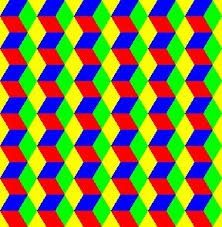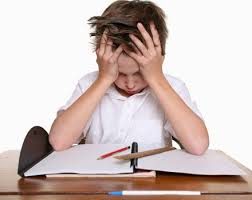Recently as part of my engagement with the social studies module I decided to take a visit to Dundee’s Verdant Works museum. As I am not from Dundee I knew very little about the history of Dundee or the jute mill industry. So not only was my trip to the museum an chance to learn a little bit more myself but also to see how this could be used as an out of school learning opportunity for a primary school class.
On arrival at verdant works, we were given a quick introduction to the background of what the museum covers and a starting point for what we would learn throughout our visit. We were also guided to a short movie which lasted around 15 minutes, which provided a quick bit of background information about Dundee’s Jute Mill industry and its impact. We then decided to have a wander round ourselves and have a look at what resources it had in terms of bringing children for fieldwork.
 There are 4 main sections within the museum: an area dedicated to all things jute (Blue area); a learning space which included dress up facilities as well as a classroom (pink area); a section which was all about living during the Victorian times including health, work, school and leisure(green area); and an area which features various travelling exhibitions throughout the year, which was currently a Lego exhibition (purple area).
There are 4 main sections within the museum: an area dedicated to all things jute (Blue area); a learning space which included dress up facilities as well as a classroom (pink area); a section which was all about living during the Victorian times including health, work, school and leisure(green area); and an area which features various travelling exhibitions throughout the year, which was currently a Lego exhibition (purple area).
Overall, I was pleasantly surprised by how good the museum was and the large amount of interactive resources it had which could be used with children. There were various parts throughout which had touch screens aimed at children which would allow them to choose certain things that they wanted to learn about and it would give them a brief audio description of whatever they had selected. I felt was a great way to allow children to take in all the information as sometimes reading huge pieces of text at the side of an artefact can be challenging or unengaging for children.

The area which I felt would be the best to explore with children is the section on Victorian life, which largely focuses on the life as a child. This area would be particularly useful for a class studying Victorian times and could be used at the start of the topic to allow children to develop questions and thoughts which could then be explored throughout the learning of the topic. Pickford(2012) supports this idea by saying that a field trip or museum visit may be used at the very beginning of a topic to stimulate children’s initial questions and line of enquiry. After returning back to the classroom these questions can be developed on and answered.
There were various fun and engaging resources for children to explore and investigate through the Victorian section of the museum, some of which can be seen below:

A set of scales which allows you to see how much you weigh compared to the average Victorian chid. This would allow children to question based on what they have learnt about factors such as health within the museum, why the average child in Victorian times weighed less than the average child today?

An area allowing children to compare and contrast different elements of life from then and now, which have them starting to understand how their life differs from that of a Victorian child.

A Victorian style classroom which allows children to see first hand and experience in a real-life context the way in which children experienced school and how this differs from their own experience. They can start to consider how it would feel being a child in this time.
The learning space and classroom section within the museum is an excellent resource aimed at school groups. This provides a space to regroup and focus on questions, ideas or information which pupils have found particularly interesting. It allows a space for teachers to outline, explain or go over any tasks being set while on the trip. Within this learning space there is also an area in which children can dress up in Victorian style clothes and do some role play. This will allow them to put themselves into the shoes (quite literally) of people from the past and start to consider how they might have felt.


Catling (2014) suggests that in order to provide children with an effective out of classroom experience, with rich learning opportunities there are a lot of things a teacher must consider before going on the field trip. You must consider how learning in your chosen place is going to allow outcomes to be achieved and how it will fit into the sequence of activities for your chosen topic. Pickford (2012) agrees with this idea that in order for fieldwork to be effective it comes down to the teacher to plan effective and relevant learning opportunities. In order to achieve the most from an out of classroom trip, children should be given the opportunity to enquire, investigate and explore independently. The verdant works makes clear on its website that they provide teachers with the opportunity to come along for a familiarisation day to allow them to get a knowledge and understanding of the museum itself, and also to allow them to begin planning how the trip will run and what they would like the learning to focus on. They also provide various learning packs and workshops which give ideas of activities and different teaching and learning which can take place within the museum. These are both very useful resources in helping teachers to plan an effective fieldtrip.
Pickford (2012) provides an example of an effective way to approach a field trip based on Victorians, through an enquiry approach. He suggests the idea of a trip to an old Victorian classroom where children will be able to experience what it was like to go to school in the Victorian times, and suggests and range of activities such as role play or even doing an old fashioned handwriting lesson within this setting. Before the trip children will be given the question “What was it like to be a Victorian child?” and this will be their enquiry question, throughout there time out of the class children must investigate independently, gather and record their own findings, and come to reasoned conclusions to the question. This may be by writing notes or even taking pictures (if cameras can be provided) of things they find might be useful or interesting. I feel like this would be one of many interesting ways in which you could approach a trip to Verdant Works as there is a big focus on the life of children during the Victorian age. With the Victorian classroom and dress up facilities it would also be possible to do some kind of role play. There are many resources which children could explore and come to there own conclusions about how life must have been for these children and how it is different from their own life. This would also link very well to the Experience and Outcomes for ‘People, Past events and Societies’. Specifically relating to one at first level: SOC 1-04a I can compare aspects of people’s daily life’s in the past with my own by using historical evidence or the experience of recreating a historical setting (Education Scotland, undated).
Overall I am very impressed with my visit to The Verdant Works, not only have I now gained a wider knowledge of the history of Dundee, but it has also proved to me it is an excellent place to provide children with rich learning experiences within history. I would love to return again in future, not as the learner but the teacher this time.
References
Catling, S. (2014) ‘Valuing, Organising and managing learning outside of the classroom’ in Arthur, J. and Cremin, T. (ed.) Learning to teach in the primary school. 3rd edn. Abington: Routledge.
Education Scotland (Undated, a) Social Studies Experience and Outcomes. Available at: https://education.gov.scot/scottish-education-system/policy-for-scottish-education/policy-drivers/cfe-(building-from-the-statement-appendix-incl-btc1-5)/Experiences%20and%20outcomes (Accessed: 30 October 2018)
Pickford, T. Gardner, W. and Jackson, E. (2013) Primary Humanities: learning through enquiry. Thousand Oaks, CA: Sage Publications.
Dundee Heritage Trust (undated) Nursery and Primary Schools: Available at: https://www.verdantworks.com/learn/nursery-primary-schools/ (Accessed; 30 October 2018)










